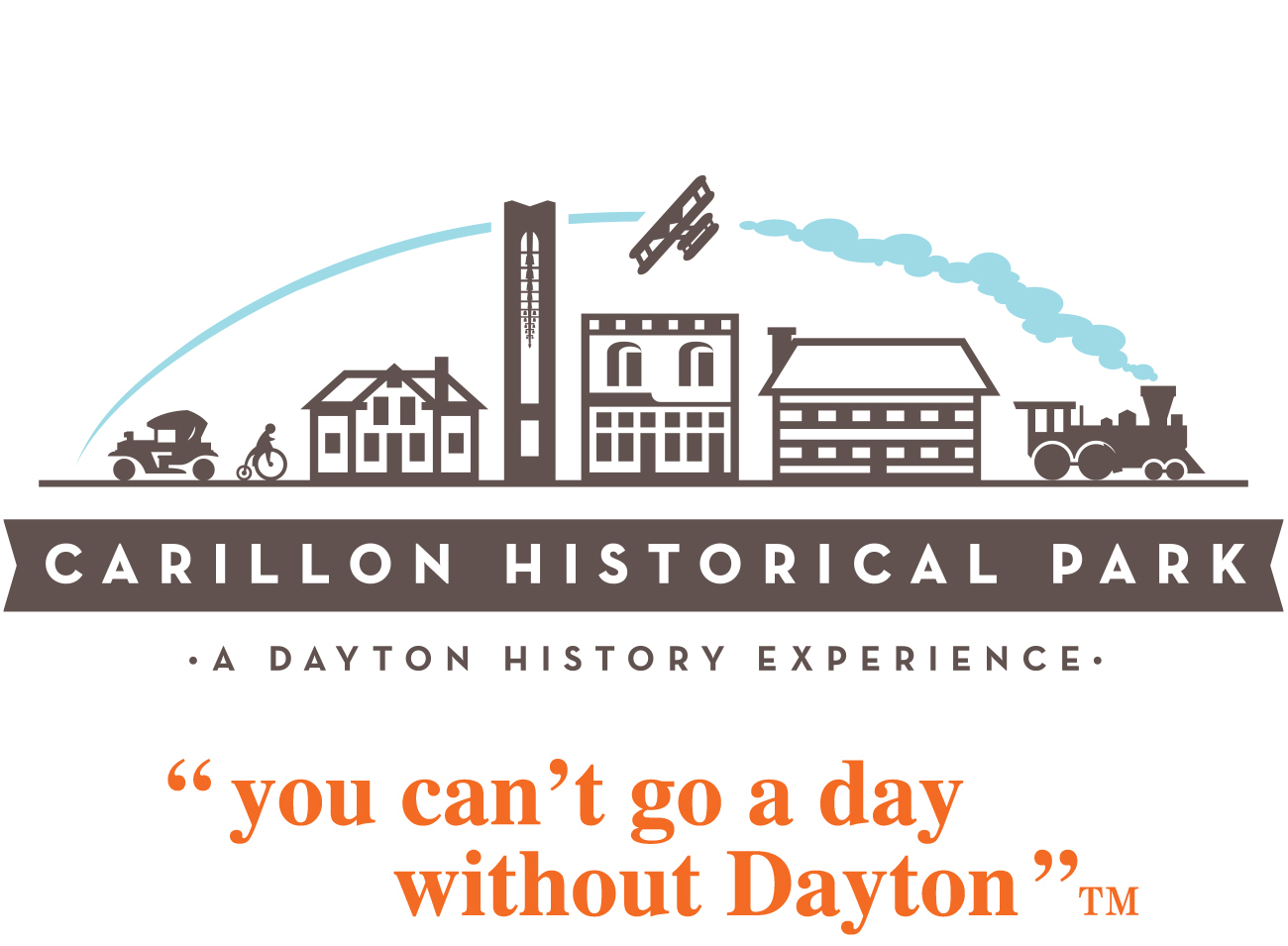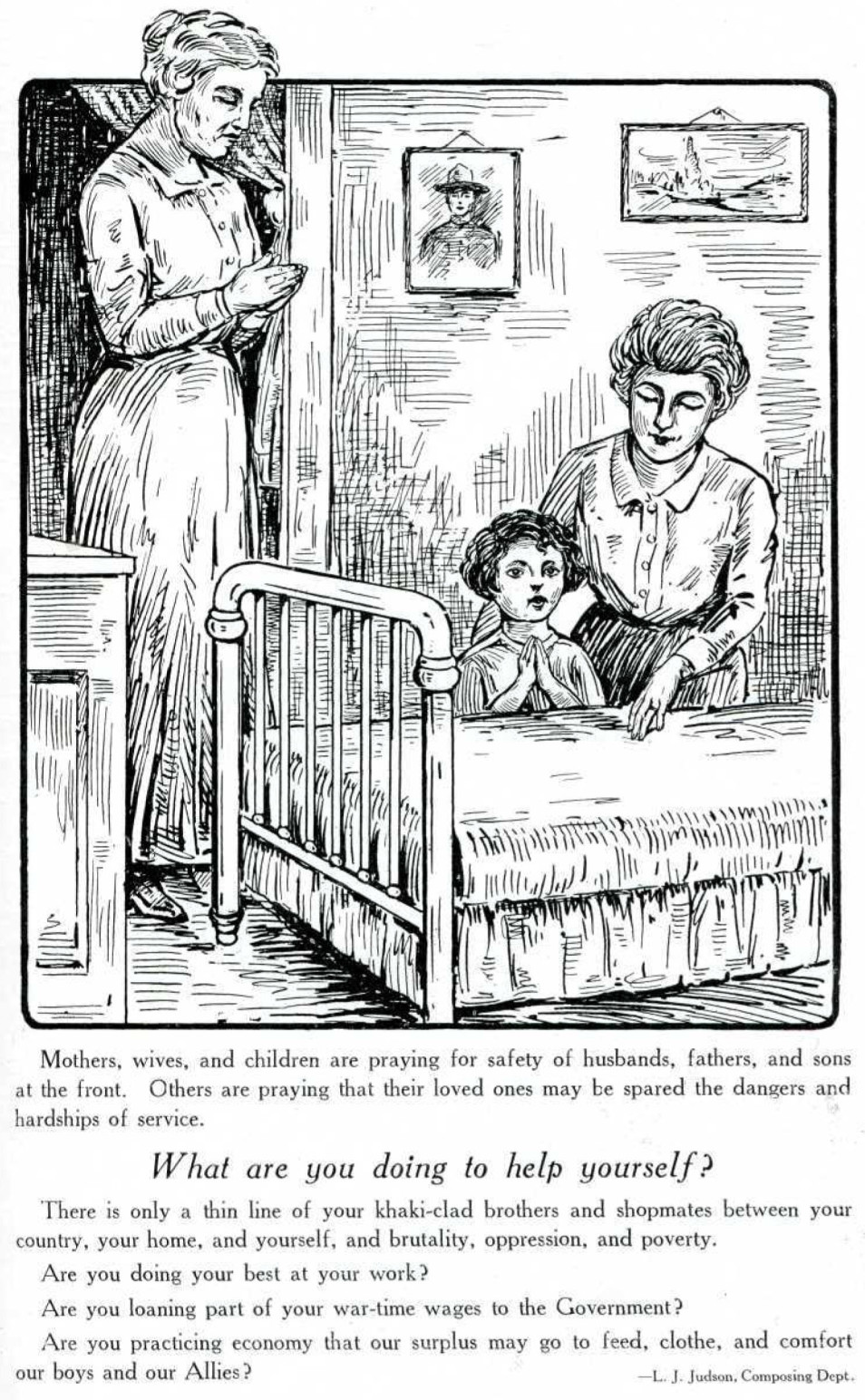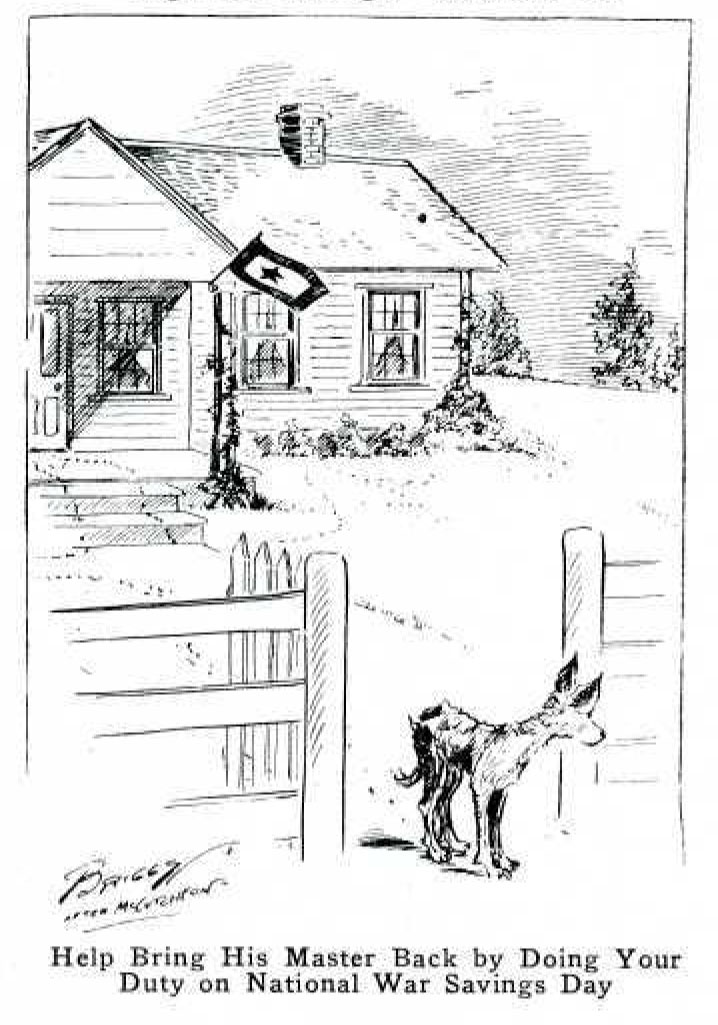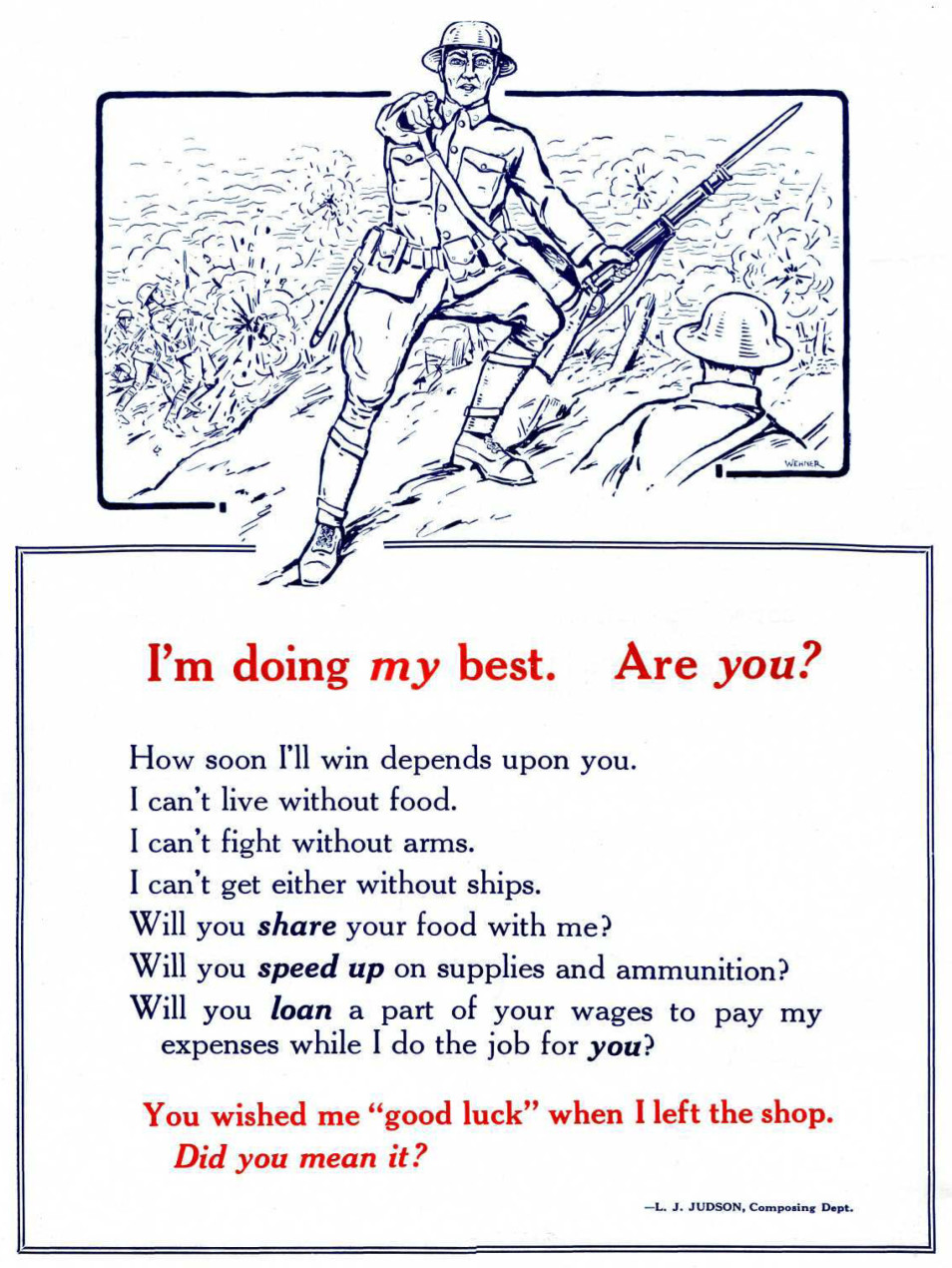The Collections Corner | March 29, 2016
“Full garbage pails in America mean empty dinner pails in America and Europe.”
– Herbert Hoover, United States Food Administrator, NCR News, November 1917
Men rushed to answer the nation’s call to arms when the United States entered the Great War. The wives and mothers who were left behind were encouraged to not only work in the factories to manufacture essential war materials, but also to keep up morale and take care of hearth and home while the men were away. Over There: Dayton in the Great War, an exhibit opening at Carillon Historical Park in May 2016, will explore the many ways in which the women of Dayton worked tirelessly to “do their bit” in support of the Allied effort during this monumental conflict.
By the time the United States entered World War I in 1917, much of Europe had been embroiled in the conflict for several years. Men had traded plows for rifles on both sides of the conflict, laying to waste vast amounts of once fertile farmlands with the resulting wide spread food shortages. Europe found itself in desperate need of sustenance. Shortly after the United States declared war on Germany, President Woodrow Wilson asked Herbert Hoover to serve as the wartime food administrator, Hoover accepted but refused any and all financial compensation. The challenge for the United States would be to not only feed itself and its troops abroad, but also provide for the Allies. Hoover immediately began educational programs to encourage American households to conserve food. Phrases like “Meatless Mondays” and “Wheatless Wednesdays” were coined by the food administration in an attempt to urge citizens to be mindful of what they were purchasing and consuming. Citizens were encouraged to eat less, grow more, and work more efficiently. New terminology was adopted during wartime, to include words like “Hoovering” (not vacuuming) and “Hooverism”, and women joined “Hoover” clubs and became members of the “Hoover Army” by practicing conservation methods at home. The following are excerpts from articles on gardening and the “Hoover Army” from the April 1917 and the September 1918 issues of the NCR News:
“…This is but one way to help in winning the war. It is an obligation of all that can, to plant gardens. Every ounce of food-stuffs grown this spring will count in the balance that shall turn the scale of the war to a victory for the Allies. Let us all plant gardens. Now, all together, “bigger and better gardens.”- J.B.
“…The Food Conservation Movement will be brought before members by means of lectures and demonstrations so that every N.C.R. woman will become a soldier in the great Hoover Army, whose battles are no less important than those being fought by the great American army “over there”.”
As food administrator, Hoover had control over nearly all aspects of American food production. He set wages and prices for farmers and their products, and told farmers what and how much to grow. He also set limits on what products were made available to the citizens at home and what was then sent to our troops abroad. He was also responsible for setting prices for products in an effort to avoid speculation, hoarding, and price gouging. After the war was over, Europe’s need for food grew even more critical. Hoover organized shipments of food to feed the millions of starving citizens throughout 23 war torn nations in central Europe.
The Collections Corner | March 15, 2016
“Our old shopmates, our brothers, and our sons are standing between our homes, our country, our flag, and moral and industrial slavery.” – L.J. Judson, NCR News, March 1918
With thousands of Dayton fathers and sons answering the nations call to arms during the First World War, many a window throughout the city featured a small rectangular flag. This flag, with its blue five-pointed star on a white ground surrounded by a thick red border, quickly became an important symbol of the sacrifice made by those left behind on the home front. The idea for the flag came to Army Captain Robert L. Queisser, of the 5th Ohio Infantry, after suffering an automobile accident which resulted in disabilities severe enough for him to be mustered out of military service. During his confinement, with two sons of his own who were in active military service, Queisser began thinking about how a mother might find solace and comfort in having some symbol that she could refer to while her son was away serving his country. It was then that the idea and design of the service flag came to mind. By September 1917, Ohio governor, James M. Cox, had officially adopted the service flag designed by Queisser, who patented his design on November 6, 1917. The following poem, featured in the December 1917 issue of the NCR News, Vol. IV, No. 6, was published shortly after the banner’s design was adopted and patented:
“The Service Flag
Dear little flag in the window there Hung with a tear and a woman’s prayer; Child of Old Glory, born with a star- Oh, what a wonderful flag you are! Blue is your star in its field of white, Dipped in the red that was born of fight; Born of the blood that our forbears shed To raise your mother, The Flag, o’erhead.
And now you’ve come, in this frenzied day, To speak from a window- to speak and say: “I am the voice of a soldier-son Gone to be gone till the victory’s won.
“I am the flag of The Service, sir; The flag of his mother- I speak for her Who stands by my window and waits and fears, But hides from the others her unwept tears.
“I am the flag of the wives who wait For the safe return of a marital mate, A mate gone forth where the war god thrives To save from sacrifice other men’s wives.
“I am the flag of the sweethearts true; The often unthought of- the sisters, too I am the flag of a mother’s son And won’t come down till the victory’s won! ”
Dear little flag in the window there, Hung with a tear and a woman’s prayer; Child of Old Glory, born with a star- What a wonderful flag you are!
The banner’s design, which wasn’t standardized and codified until the end of World War II, can feature either blue stars or gold stars. Living servicemen and women are represented by a blue star while those who had lost their lives in service to their country are represented by a gold star. Blue Star Mothers and Gold Star Mothers organizations have been established, with the Gold Star Mothers having been organized during the First World War and, like the service flag itself, both organizations continue to exist today.
The Collections Corner | March 1, 2016
““In times of war “neutrality” means one of two things: Treason or cowardice.”
– Anonymous, NCR News, April 1918
When the United States entered World War I in 1917, Dayton was a manufacturing powerhouse, and as such, supplied the Allies with essential parts and equipment needed to win the war. The city also provided manpower, as thousands of Dayton’s own either enlisted or were drafted. These men played an active role in the fighting overseas, serving in all branches of the military, and in all fields, including infantry, artillery, armor, engineers, and aviation. Many of Dayton’s own served with distinction in several of World War I’s greatest battles, such as St. Mihiel and Meuse-Argonne. With so many men leaving for the battlefields of Europe and large government contracts flooding in, factories were saddled with the task of finding and training a new workforce. For example, the National Cash Register Company, which was at the time one of Dayton’s largest employers, lost a significant portion of its skilled workforce to the local recruitment offices and draft board. A short article featured in the July 1918 issue of the NCR News, Vol. V, No. 1, tells of one such group of draftees:
“Fifty Men Leave Service
Of Best Employer in America.
Approximately fifty men; capable and experienced workmen laid down their tools and left the service of the Company in the recent draft.
No, there wasn’t a strike or any kind of labor trouble; nor were the men dissatisfied with their pay. They came from nearly every department, and left the service of the Company to go to work for their Uncle at Camp Zachary Taylor, at Louisville, Kentucky. They are the latest addition to the more than six hundred men from the N.C.R. Company, who are now fighting to make the world a decent place to live in…”
For more on Dayton’s important role in the First World War, be sure to visit: Over There: Dayton in the Great War, a special commemorative exhibit opening at Carillon Historical Park in May 2016!







